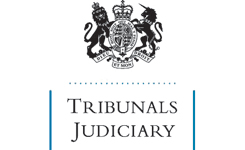|
Notes:
|
Court of Appeal decision reported as [2014] AACR 29.
Work capability assessment – meaning of “social engagement” and “always precluded” – relationship between descriptor 13 of Schedule 3 to and regulation 34(2) of the 2008 Regulations
The claimant received employment and support allowance (ESA). His GP confirmed that he suffered from anxiety, depression and migraine headaches and was a recluse. On the basis of a questionnaire, a health care professional (HCP) concluded that the available evidence suggested that the claimant could engage in some social activity (but she neither saw nor examined him). The Secretary of State for Work and Pensions decided that the appellant fell within the Work-Related Activity Group (WRAG), not the support group. The claimant appealed against that decision and submitted further medical evidence from his GP. The First-tier Tribunal (F-tT) rejected the claimant’s appeal and, amongst other things, referred to his having successfully coped with seeing the HCP. The Upper Tribunal (UT) remitted the case to a fresh F-tT; holding that the original F-tT had erred in its findings about the HCP, that the phrase “always precluded”, as used in descriptor 13 of Schedule 3 to the Employment and Support Allowance Regulations 2008, meant “repeatedly” or “persistent” or “often” and that, following Charlton v Secretary of State for Work and Pensions [2009] EWCA Civ 42, reported as R(IB) 2/09, the F-tT had applied too narrow a test to regulation 35. The Secretary of State appealed to the Court of Session (Inner House) with respect to the last two issues.
Held, allowing the appeal, that:
1. descriptor 13 of Schedule 3 to the 2008 Regulations required to be considered not only in the context of those regulations but also of the relevant legislative provisions, the intention of which was to place within the WRAG those persons who might have potential for engagement in the labour market, provided it was reasonable to require them to perform work-related activity, including attending one or more work-focused interviews (paragraphs 32 to 33);
2. regulation 34(2) had a moderating influence; to avoid being included in the WRAG, claimants did not need to show that they fell within a descriptor all the time, and there was nothing which would justify ignoring the terms of regulation 34(2) and thus depriving descriptor 13, or any other of the Schedule 3 descriptors, of that influence. “Always” as used in descriptor 13 could not have been intended to mean “always” in the sense of the claimant never, at any time, whatever the circumstances, being able to engage in social contact (paragraphs 34 to 35);
3. a purposive construction was required and descriptor 13 had to apply if a claimant suffered from a mental disorder which had the consequence that, for the majority of the time, he could not engage in social contact; that construction properly embraced regulation 34(1) and (2), and the terms of descriptor 13, and accorded with their evident intention. The question of whether or not a person was wholly precluded from engagement in social contact for the majority of the time was one of fact, having regard to the statutory provisions and the guidance provided by the court. It could not be decided by the application of any precise mathematical approach but by the fact-finding tribunal having regard to the evidence in the particular case of the effects of the claimant’s condition in a realistic way whilst bearing in mind the purpose of the legislation (paragraphs 37);
4. the relevant passage from Charlton v Secretary of State for Work and Pensions afforded guidance on regulation 35(2) and the F-tT should take it into account and make clear in its reasons that it had done so (paragraphs 38).
The Court decided that it was unnecessary to set aside the UT’s decision to remit the claimant’s appeal to a freshly constituted F-tT but that the new tribunal must make its decision on the basis of the Court’s statutory interpretation.
|
